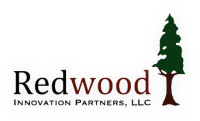3D printing follows in the wake of desktop laser printers, printed electronics, and the moveable type printing press itself as the latest of innovations to capture creators’ imaginations and initiate a transformation of the landscape of fabrication. Parts and pieces of designed objects can be produced on demand, anywhere and at any time. To compare the impact of 3D printing to previous printing technologies is completely appropriate, as already the potential of applications of 3D printing is clearly profound.
Opportunities for business are varied, and still emerging. There are the manufacture of raw materials (analogous to laser printer ink), the 3D-printing equipment, subparts and assemblies, IP and enabling technologies for a range of kinds of printers. There are also opportunities in adding functionality to existing structural elements, including functioning electronics, moving mechanical parts, and hybrids of 3D-printed and non-3D-printed components. With decentralized fabrication technologies will also come needs to reclaim waste materials, equipment service and repair, and entirely new business models.
Trends in 3D-printing and applications point to business opportunities in platform innovations, systems integration, additive manufacturing, materials development to enable the use of varied materials with less specialized equipment, and combining electrical, mechanical, and other parts into 3D-printed parts. There are even 3D printers that are designed and marketed to make objects based on edible materials.
Hype around 3D printing has flowed over into developments and announcements in 3D-printed organs and medical devices, “printed” chemicals and pharmaceuticals, 3D-printing pens, and 3D-printed biocompatible materials.
To make objects from a 3D printer, you need object files, and the Thingiverse website hosts the largest repository of free 3D printing CAD designs.
Commercial activities, today, include Home Depot’s announcement that it will sell 3D printers. That comes after Staples and UPS have tested in-store demonstrations of 3D printing services.
Additive manufacturing is not without its challenges. Some risks of 3D printers have already emerged, for instance, the printing of guns and military equipment has been demonstrated. With the space receiving so much interest and development happening so quickly, it is unclear how regulators and lawmakers will respond.
Two key enabling technology for 3D printing are the development of new and improved functional coatings and high durability printing nozzles. Firms which have extensive backgrounds in new materials design / synthesis and developing new applications for advanced materials are ideally positioned to address these challenges.
